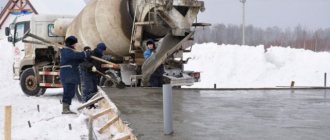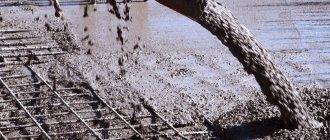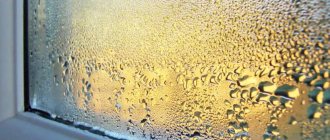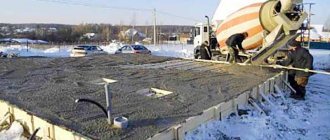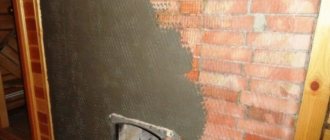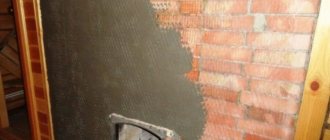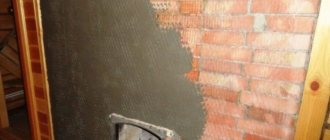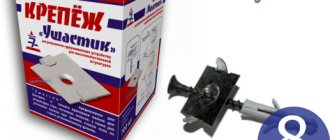Working with cement mortar at sub-zero temperatures, what are the nuances?
Taking into account the fact that water in the solution leads to freezing and premature setting, when working with cement mortar at sub-zero temperatures, the following nuances are taken into account:
- anti-freezing liquid is added to the solution;
- after pouring the cement mortar, it is covered with mats;
- Electric thermo-mats are also used for heating.
The use of special anti-freezing additives and electric mats guarantees high-quality work. Of course there is a cheaper way. It is enough to simply cover the concrete with any heat-insulating material, which is also not blown through, and then the heat present in the cement mortar will be retained for a long time under the insulation layer.
What is cement mortar for? Firstly, for example, for laying bricks, cinder blocks, gas silicate blocks or just blocks for the foundation - what needs to be taken into account is, firstly, increase the proportion of cement in the mortar batch by 30%, secondly, naturally, try to work it out before it freezes, so How to put his frozen breasts in the seams is not only unacceptable, but also inconvenient! This method is not new and is called the freezing method, they build sheds and garages this way, lay foundations, erect partitions and labyrinths, lay unnecessary openings and passages, and in principle they do everything related to rough masonry, but it is not recommended to lay the front one in this way, although life and time will press on and they will put the front door in the cold, and they will also build a high-rise building and they won’t cost anything! Let's move on, the question was asked about cement mortar, it can also be used, for example, for screeding or leveling the surface - then you need to prepare the required amount of oilcloth area and the insulation will be suitable mineral wool, after the mortar has been poured and leveled, it will need to be covered with oilcloth and insulated on top mineral wool, it is not advisable to work on such a surface until spring (let it remain covered), but if necessary, not earlier than three weeks! When laying the foundation, building basements, drainage pits, drainage boxes, frost does not cause any trouble at all, since it simply does not exist below ground level, and the mixed mortar, which is periodically stirred with a mortar mixer, does not freeze for a very long time.
Typically, cement mortar is made using water. And at sub-zero temperatures, the solution does not set, but the water in the solution freezes. Therefore, problems will begin in spring and summer. The cement structure will simply begin to crumble. To avoid this, you can use antifreeze liquid; it will prevent the water from freezing and turning into ice. In addition, you can use a simpler method known for a long time: add a sufficient amount of salt to the solution, or rather, it is better to first dissolve the salt in water, then add this water to the solution. Salt-water does not freeze in sub-zero weather; even in severe frosts it constantly turns into mush. This solution will take a little longer to set, but then there will be no problems. You can also cover the solution with isolon; this will also protect against frost, although not for long.
At sub-zero temperatures, the solution freezes quickly.
In order to prolong the viability of the solution, salt is added to it. Regular salt.
Only salt needs to be added when preparing the solution. Although you can add salt afterwards, the main thing is to mix well.
Bricklaying in winter
Bricklaying in winter
Everyone knows that it is undesirable to carry out construction work in the winter season. But sometimes frosts come earlier than usual, especially in northern latitudes, and no warming is expected, but construction must be completed. Or mothballing the facility for the winter will entail considerable destruction. Of course, it is possible to lay bricks in the winter season, even down to -50°C, but special technologies and nuances are required.
At sub-zero temperatures it is difficult to provide the structure with the required strength. When the temperature decreases, the hardening of the solution slows down, and at 0°C it practically stops. The solution consists of a mixture of water, sand and cement. At sub-zero temperatures, water turns into ice, interaction with the binding elements is disrupted, and the strength of the solution at the time of freezing is only a small percentage of the design value.
How long does it take for brickwork to dry outside: optimal temperature
Typically, construction work is carried out in the warm season, which is due to the properties of most materials. When deciding on the construction of certain elements of a building at sub-zero temperatures, they are guided by the characteristics of a particular solution and the level of complexity of the work. It is also necessary to take into account the technical capabilities and power of the additional devices used. The article describes at what temperature bricks can be laid.
How to choose the time of year and up to how many degrees you can lay bricks
Up to how many degrees can masonry be done? In the cold season, it is difficult to start building a building, since creating a building in freezing temperatures takes a significant amount of time and requires the use of additional equipment. At minus temperatures, almost any liquid freezes, which complicates the process of preparing cement mortar and other mixtures.
Due to a large number of difficulties, only a small part of developers decide to erect a building in the cold.
If there is an urgent need for construction in winter, if the workers have the appropriate level of skill, as well as the possibility of purchasing or renting additional equipment, this task is feasible.
You must follow the rules for preparing the solution and pay attention to certain nuances of the work so that the finished building looks presentable and is reliable.
In order to be guaranteed of the high quality of the brickwork, it is necessary to carry out construction work only in positive weather, and also to control the optimal level of air humidity.
Cement today is the most common material used in construction and renovation. Here are the characteristics and features of M400 cement.
Without tile adhesive today it is impossible to finish indoors. Here you will learn about the consumption of tile adhesive.
Arranging and decorating a kitchen apron will require a special approach from you, since the kitchen has high humidity. By clicking on the link, you will get acquainted with wall panels for the kitchen made of glass.
When the temperature drops, the hardening properties of the cement mortar worsen; at minus temperatures, it is impossible to prepare it without additional devices. If the temperature is too low, the water may freeze completely and turn into ice.
Folk remedies
Some people add regular automotive antifreeze to the mortar to give it the desired properties. But after introducing it into the composition, it is necessary to constantly monitor the quality of hardening. Otherwise, the cement mortar will not harden correctly.
To do this, do-it-yourself winter brickwork must have a small number of nests in which plugs will be inserted. After their removal, it becomes possible to measure the temperature of the solution in this area. Due to this, the condition of the cement and hardening are monitored.
It is necessary to build walls when the masonry mixture for bricks is supplemented with antifreeze, carefully and taking the necessary precautions.
This is due to the fact that such inclusions belong to inorganic solvents, as well as mineral salts. Therefore, during the masonry process, workers must use protective clothing, gloves, and face and eye protection. Failure to comply with these measures results in chemical burns.
At what temperature can concrete be poured at different times of the year?
The strength of the foundation of a building is determined by the quality of the mortar, compliance with the sequence of its installation and weather conditions in a particular area. Therefore, it is necessary to find out at what temperature concrete can be poured in the warm and cold seasons.
Features of strength gain of concrete structures
To clarify at what air temperature the cement mixture can be poured, you need to understand the hardening process. In the finished solution, a reaction occurs between the components of cement and water - hydration. The process takes place in two stages:
- setting with the participation of SZA aluminates. Inside the concrete, needle crystals are generated that bond with each other. After 6-10 hours, a kind of skeleton of the mixture is formed;
- hardening with the participation of clinker minerals C3S and C2S. During concrete hardening, a silicate finely porous mass of small crystals is formed.
Interesting to know! At low temperatures, the water in the foundation becomes ice, which leads to the end of hardening and setting.
The danger of the influence of sub-zero temperatures on the state of the mixture
The rate of hydration reactions and strength gain of concrete is tied to the ambient temperature. When it is lowered from +20 to +5 degrees, the hardening time increases 5 times. The hardening process is even slower if it gets cold outside.
Pros and cons of antifreeze impurities
The positive aspects of use are:
Such substances allow the necessary work to be carried out even in winter.
- carrying out work on the construction of concrete structures even in cold weather;
- increasing the strength of the building as a result of increasing the adhesion reaction;
- use of the product in industry;
- increasing service life;
- increase in frost resistance, moisture permeability;
- low cost of additives;
- acceleration of hardening of the concrete mixture;
- ease of shaping due to increased mobility;
- unchanged solution structure.
However, builders also highlight disadvantages:
- using more cement;
- toxicity of some substances included in the composition;
- reduction in the declared power and strength of the concrete product;
- increased risk of corrosion.
Winter solutions used at low temperatures
When building a home in late fall or winter, you should use products designed for use in low temperatures. These include winter masonry mortars and foams, as well as frost-resistant additives that speed up bonding. You should study what other products can be used during frosts.
Products for use at low temperatures
More and more winter construction products are being developed for use at low temperatures, usually 0 °C, sometimes even down to -10 °C. Additive modifiers can also be used to work with materials prepared with water: binding and evaporation of water are accelerated, and plasticity is increased. When using winter materials or frost fillers, you must strictly follow the manufacturer's recommendations. Because even in a group of the same products there may be different ways of preparing them at low temperatures, often different, depending on the temperature.
Using winter products or cold additives during freezing temperatures
Some masonry solutions must be prepared with warm water or denatured alcohol added to them. You should very carefully read the manufacturer's recommendations on the conditions for using the product during winter. The technological maps contain notes on how to prepare the material, at what temperature it can be used, after what time the temperature can drop and by how many degrees. The buyer should be aware that modified products with special additives are more expensive than standard ones.
Masonry and concreting at temperatures below +5 °C
Carrying out wet construction work (using mortar or concrete mixture) at temperatures below +5 °C is troublesome. Deviations appear in the bonding and strengthening of materials. This applies to both the ambient temperature and the substrate.
For masonry, masonry elements should be used in an air-dry state. It is impossible to use masonry elements on a wet or icy surface, since then there will be no required merging of the elements with the mortar. Materials such as bricks, hollow blocks, blocks are stored in an open area. And yet, the materials intended for masonry must be placed in a heated room for 24 hours in advance.
Masonry in winter - expert advice
But, in the case of construction at temperatures below 0 °C, no wet work, brick laying, concreting, or plastering should be carried out at the construction site. As an exception, it is allowed to perform these works, but up to a temperature of -10 °C, when using special anti-frost additives (AMD). These additives accelerate the release of the heat of cement hydration and reduce the freezing point of fresh concrete at subzero temperatures. They work as plasticizers, increasing the strength of concrete in the initial stage of hardening and the final strength.
Winter masonry mortar
Many manufacturers of construction chemicals offer winter masonry mortars that can be used at temperatures down to 0 degrees Celsius. Often this is a thin-layer solution that binds quickly. In a traditional concrete mixer solution, antifreeze additives can be used. As a rule, they contain plasticizing agents and accelerate binding.
Dry laying system
This is the first system on the market for dry masonry, without the use of water. Polished ceramic blocks are bonded with a solution in the form of foam. Brickwork work can be carried out at temperatures down to -5 °C. Using a gun, strips of foam are applied to the top of the hollow blocks and another layer is added. Of course, this is a system that must be included in the project. It is not allowed to use it for laying walls made of other materials. But if they are going to extend the construction season and start brick work in very early spring or late autumn, then this is the first product for working in frosts, although not in severe frosts.
Types of additives
Experts distinguish 2 groups:
- retarders or weak accelerators of hardening;
- impurities that accelerate the hardening of the concrete mixture.
Classification of chemical-based additives
| Name | Characteristic |
| Antifreeze | Reduces the crystallization temperature of the mixture |
| Does not affect the rate of structure formation | |
| Increases or slightly decreases the speed of setting of the solution | |
| Sulfates | Provides greater speed of creating mixture density |
| Promote heat release | |
| Accelerator additives | Lowers the freezing point of liquid |
